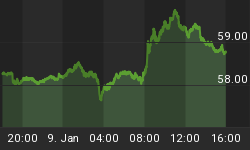Admittedly, the markets like what they are seeing. Today the God of the Markets, Mr. Greenspan, has uttered some soothing words about the US economy and interest rates and the USD is instantly rewarded with a blip up. Voila. Like I said a few days ago, the markets run on short-sighted events and the herd psychology. As long as the herd is stampeding it's not likely to stop and ask questions. Yee-Haw, 11,000 DOW here we come. Who's to argue ?
Advisor sentiment remains bullish and the housing sector continues at elevated levels.
Housing starts rise to 21-year high: http://www.marketwatch.com/news/story.asp?guid=%7BBE8FDCED%2D8E52%2D4584%2DB08A%2DAD1E100E42B8%7D&siteid=mktw&dist=
In thinking about it, I came up with the Spinning Top analogy - as long as the input force (liquidity) is sufficient, the top (markets) will spin fast and furious. Right now, asset prices rise and provide a "wealth factor" to the consumer, a sort of Housing ATM machine. The consumer, promptly feeling much wealthier, continues to re-cycle that supposed wealth back into the markets. A self-sustaining force. This has been of course accommodated by Greenspan and the Fed by having the lending rates at their lowest point in 60 years. Even the recent rises are still only nominally above the inflation rate and hence have not caused any real slowdown in the consumer voracity for credit. Hence, credit levels show no sign of declining in dramatic - i.e. endangering - ways.

a) Outstanding Consumer Credit - in millions USD


b) Credit Debt Owed - in billions of USD

Courtesy of : http://hyperphysics.phy-astr.gsu.edu/hbase/top.html
When does the top start to wobble? It starts to wobble as soon as insufficient energy is applied. Should the liquidity part of the equation start to decline, the top will not be able to sustain a spin and hence the precession increases, i.e. the economy starts to wobble, until it falls over. Is this plausible? I think it is and I think this is the conundrum currently faced not only in the US but also in Japan and the EU. Japan's interest rates are 0%. EU has 2% and USA has 2.5% -- do these look like STRONG economies to you? To me they look rather weak and precarious.
An excellent article in the FT entitled "A changed financial landscape may be eroding resistance to systemic risk" discusses these facts. Quote "Meanwhile, interest rates that are still very low by historic standards are doing strange things to a financial system that is highly deregulated." Further, the subtitle states "Banks have spread their lending exposure but are holding more derivatives, while the wide range of brokerage services they supply to hedge funds is even being described as the ‘crack cocaine of global finance'".
In other words, as long as all the financial instruments remain PERFECTLY in place and within the mathematical bounds of the inherent risk formula behind it, the system will hold up. But, as soon as one end of the system starts to unravel, the in-built risk models will likely be unable to stem the tide of back pressure inherent to the original premise of the trade. At that point of collapse, it may truly cause a world-wide meltdown within the banking system which would dwarf the LTCM scandal.
More on this in upcoming issues - if you would like to know more, please sign up for a free subscription to Der Invest Informant here.















